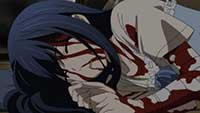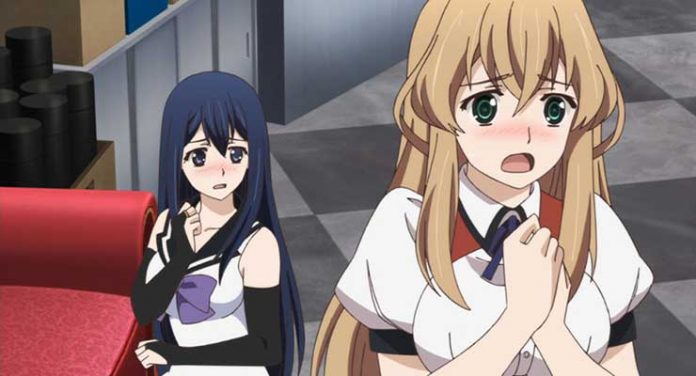
When Murakami Ryōta was little he had a childhood friend, a girl he always called “Kuroneko” (black cat). The two had a very close relationship, perhaps even what one might call “puppy love” and they always used to watch the stars together. Kuroneko told Ryōta that she believed in aliens and that she could prove they existed, because she’d seen one and she could show him. So one day, she attempts to show Ryōta the alien, but during the course of climbing a dam to get to the place where the alien is, Kuroneko slips and falls. Ryōta tries to grab her, but he cannot hold on. Ever since, he has blamed himself for her death and faithfully watching the stars in her honor, now doing so from his high school astronomy club, of which he is the sole member. One day, a new transfer student joins Ryōta’s school. Her name is Kuroha Neko, and to Ryōta’s amazement, she looks just like Kuroneko, only older now. But Neko doesn’t know who Ryōta is, or so she says. Still, later that day, after surprising Ryōta yet again by joining his astronomy club, still insisting she doesn’t know and never knew him, Kuroha Neko saves Ryōta from an unforeseen disaster and displays supernatural abilities while doing so. She claims she is a witch. Ryōta finds she is living with another girl, Tachibana Kana, also a witch, but one who is mostly paralyzed and can only use her hands to type out on a special device to communicate. Kana’s ability is the ability to predict disastrous future events, on which Neko can take action to save people. They have both been genetically modified by a nefarious organization to be able to use these “witch” powers, but they are low-level witches, cast off and now on the run. To stay alive they need help and a special drug from the very organization that wants them dead.
Eventually, Ryōta finds himself surrounded by not two, but five of these witches, all in need of this drug, and his help, and all, as anime tends to work, finding themselves becoming emotionally attached to Ryōta. They are 
I enjoyed the way Brynhildr in the Darkness was able to combine elements of fantasy, science fiction, action and mystery into a cohesive storyline and make viewers really start to care about the characters. The flaw here was the writers’ typical use of the harem plot device, which has been used so many times in anime that calling it cliché is in itself a cliché by now. This series could have done without it, and it would have been stronger is if it honed the story of Neko and Ryōta and built around that more, and not making it just another side romance. That said, we do get some beautifully drawn characters and excellently animated action sequences, though nothing here could really be considered innovative.
The Video

The Audio
We get both the original Japanese-audio soundtrack and English dub on this release in DTS-HD Master Audio 
The Supplements

The Final Assessment
Brynhildr in the Darkness is an interesting if a little bit flawed series that looks great and has a lot of strong points. It takes the harem element, though misguided, and places it in somewhat different surroundings, mixing up an almost Gothic feel with Germanic mythology and science fiction. The romance tempers some the series’ doom and gloom to lighten things up just a tad.
Be the first to leave a review.


